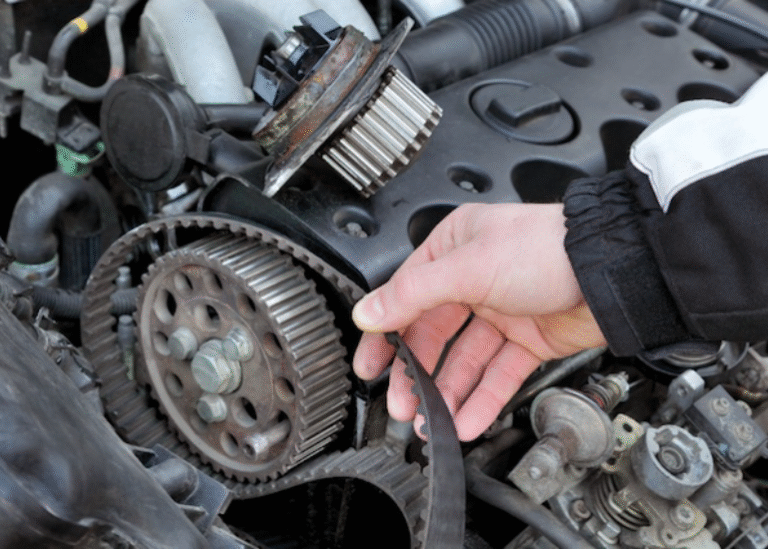When it comes to vehicle maintenance, the basic ones are changing the oil, checking the brakes, regular washes, etc. But these are not the only vehicle maintenance services to perform in a car. Some others are often hidden from plain sight. Or, they have such long service intervals that owners can forget about them. That is until something goes wrong.
One of these is the timing belt. And, oftentimes, when you go to replace it, it’s recommended you replace the water pump, too. But why is that?
What Does the Timing Belt Do?
As Autoblog explains, the timing belt is a key component in keeping your car’s engine running.
For the engine to make power, its pistons have to rotate, and the combustion chamber’s valves open and close. The pistons are attached to a crankshaft, which sends power through the transmission and differential to the wheels. Meanwhile, the valves move thanks to a rotating camshaft.
However, this operation requires precise timing. If the intake valve stays open too long, air will escape, and power drops. And if too much air escapes, the mini-explosion which creates the power won’t happen. Jalopnik explains if you have an interference-type engine. These engines have valves that open further into the combustion chamber for improved power and efficiency. But, if the piston and valves are out of sync, the piston could collide with the extended valve.
So, to keep the crankshaft and camshaft(s) synced, both are linked via the timing belt. Or, as reported here, depending on what kind of vehicle you have, a timing chain. The belt is quieter and doesn’t have to be lubricated. But the chain is made of metal, which lasts longer. Regardless, at some point, due to stretching and wear, they’ll have to be replaced. Typically, for a timing belt, that’s after 60,000-100,000 miles.
Autoblog explains that the timing belt isn’t the same as the serpentine (‘drive’) belt. True, both are connected to the crankshaft. However, the former is located inside the engine, albeit by the outer wall. The latter is found externally and drives many of the car’s accessories, like the alternator, power steering pump, and A/C pump.
But, the timing belt sometimes pulls double duty. Not only does it keep the crankshaft and camshaft(s) synced, but it sometimes also drives the water pump.
Why Should You Replace the Water Pump and Timing Belt?
Technically, replacing the water pump with the timing belt isn’t strictly necessary. The water pump is still fine if your coolant isn’t leaking and your engine isn’t overheating. However, Carfax explains there are some reasons why replacing the water pump and timing belt together is a good idea.
The water pump’s lifespan is typically 60,000-100,000 miles. And if the timing belt fails, whether due to simple age, or the failure of a tension pulley or bearing, the water pump will likely fail along with it.
Conclusion
Considering all of these while changing your timing belt, it’s just an extra little work to replace the pump at the same time.
Have 1 million naira and above to Buy or Sell Cars In Nigeria? Check carlots.ng
All rights reserved. Reproduction, publication, broadcasting, rewriting, or redistribution of this material and other digital content on carmart.ng is strictly prohibited without prior express written permission from Carmart Nigeria - Contact: [email protected]


